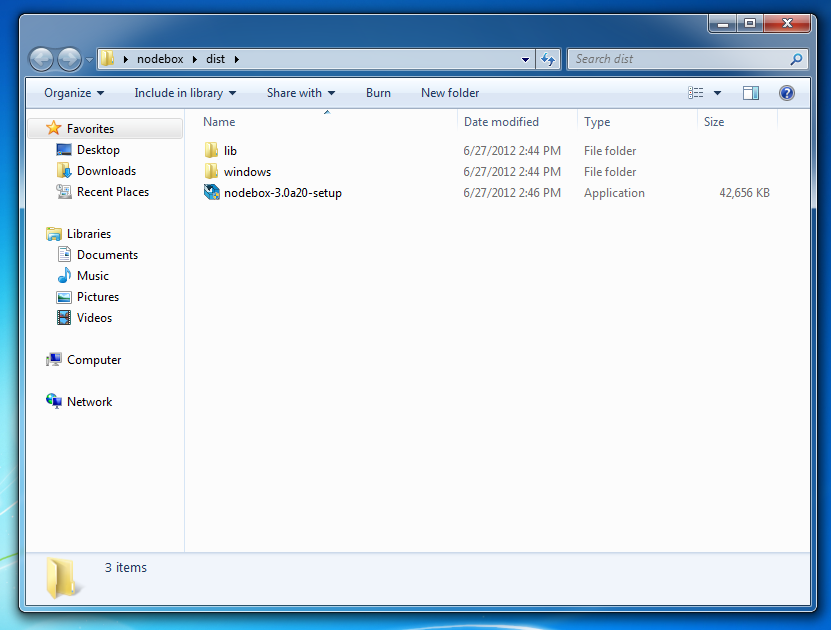

- #Nodebox animation example how to
- #Nodebox animation example software
- #Nodebox animation example code
#Nodebox animation example software
It's also suitable for various software methods like ray-tracing.

It's suitableįor real-time rendering (e.g. The specification of the language is open. Good shadow from a single triangle, with shadow volumes drawn 8.12. Cylinder open at the bottom with shadow edges 8.10. Cylinder open at the bottom with shadow quads 8.9. A cylinder capped at the top, open at the bottom 8.8. Lack of shadows, problem analogous to ghost shadows 8.7. Material transparency with regular stipples 8.1. Material transparency with random stipples 6.9.

You can see that it's floating right before the player. The transparent ghost rendered correctly: But it's transparent and is rendered incorrectly: The ghost creature on this screenshot is actually Rendering with the fog (only objects within the fog visibility range Rendering without the fog (camera frustum culling is used) 6.5. (containing fog coordinate for each vertex) for both trees. The wrong rendering of the trees with volumetric fog, The correct rendering of the trees with volumetric fog 6.3. All the trees visible on this screenshot areĪctually the same tree model, only moved and rotatedĭifferently. lets_take_a_walk scene, with ground texture. A nasty case when a box is considered to beĬolliding with a frustum, but in fact it's outside of theįrustum 5.1. A sample octree constructed for a scene with two boxes and a sphere 4.2. Different triangulations example (ray-tracer rendering) 4.1. Different triangulations example (Gouraud shading) 3.3. Different triangulations example (wireframe view) 3.2. Interactive scene, with shadows and mirors, Simple scene, viewed from various viewports simultaneously. Three 3D objects are rendered here: precalculatedĭinosaur animation, scripted (could be interactive) fountain animation,Īnd static tower. Three towers with various creaseAngle settings 2.1. Viewpoint defined for our previous example with multiplied cones 1.18. Textured cube with various texture transformations 1.17. With a slight translation and rotation 1.16. Of reusing cone inlined a couple of times, each time An example how properties “ leak out”įrom various grouping nodes in VRML 1.0 1.15. Spheres with various material in VRML 1.0 1.14. Faces, lines and point sets rendered using A box and a translated sphere using the same texture 1.11. A box, a translated sphere,Īnd a translated and scaled sphere 1.9.

An unlit box and a sphere in VRML 2.0 1.7. VRML points example: yellow pointĪt the bottom, blue point at the top 1.5. (because it's unlit, non-wireframe rendering would lookĬonfusing) 1.4. Cylinder example, rendered in wireframe mode Not closed silhouettes due to BorderEdges 8.4.3. Lack of shadows (analogous to ghost shadows) 8.4.2. Problems with BorderEdges (models not 2-manifold) 8.4.1.
#Nodebox animation example how to
Quick overview how to use shadow volumes in our engine 8.2. Storing precalculated animations in Kanim files 8. Non-interactive precalculated animation: TCastlePrecalculatedAnimation 7.2.1. Material transparency using polygon stipple 6.4.3. Material transparency using OpenGL alpha blending 6.4.2. Specialized OpenGL rendering routines vs Triangulate approach 6.4. Rendering using geometry arrays and VBO 6.2.2. The future - dynamic irregular octrees 4.4. Transforming between world and local coordinates 4.3.2. Checking for collisions using the octree 4.2.2.
#Nodebox animation example code
Constructing and processing VRML graph by code 3.6. Reading, writing, processing VRML scene graph 3.1. Scene manager, and basic example of using our engine 2.2. Special thanks to Alexander Bohn, Anselm Levskaya, and Adam Suharja for beta testing and essential feedback.Table of Contents Goals 1. PlotDevice is primarily the work of Christian Swinehart, with significant API-design contributions from Marcos Ojeda. Despite these changes, it maintains backward compatibility with all the original NodeBox commands. Is the use of the Python with statement to Of Python and macOS and adding syntactic sugar as judiciously as possible. PlotDevice is an “existential refactor” of the NodeBox code, updating it to work with modern versions Twofold: offering a powerful graphics tool for Pythonistas and providing a learning environment for budding programmers. This project is a fork of the NodeBox 1 application which was developed in theĮarly oughts at the Experimental Media Research Group in Antwerp and derived from an early version of DrawBot.


 0 kommentar(er)
0 kommentar(er)
